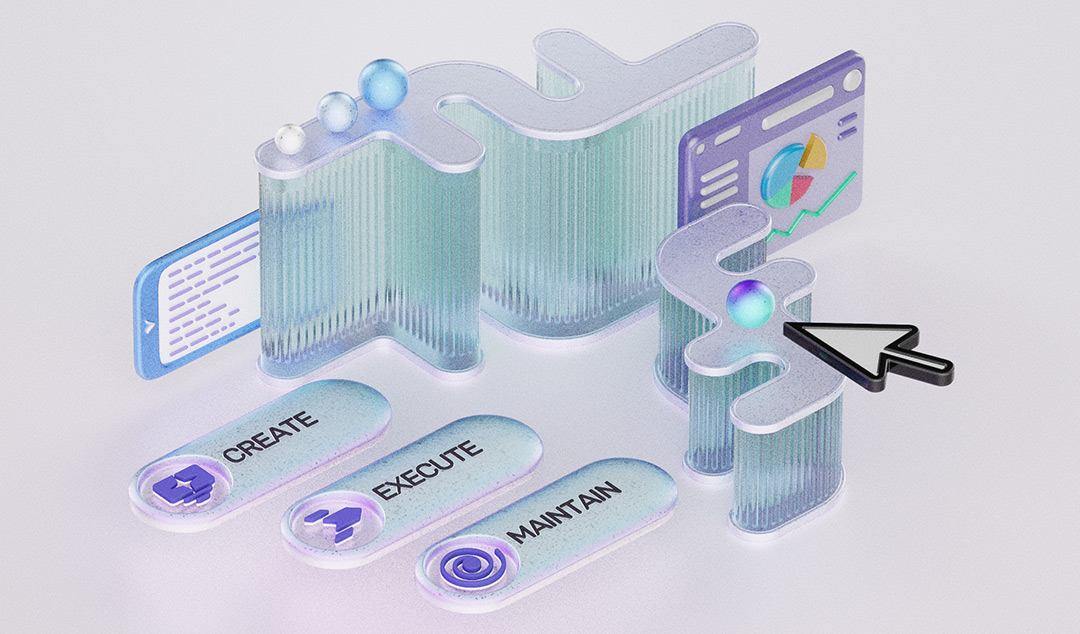The Economics of Impossible: Why GPU-Dependent Testing Will Never Scale
Enterprise testing volumes require trillions of tokens monthly. Discover why GPU-dependent AI testing solutions face impossible economics at scale.

Enterprise testing teams face a harsh mathematical reality: GPU-dependent AI testing solutions create cost structures that fundamentally cannot scale. While vendors promote their foundation model integrations as innovation, the underlying economics reveal why these approaches will collapse under real-world enterprise demands.
The numbers tell a stark story. When you examine actual enterprise testing volumes against current GPU infrastructure limitations and token-based pricing models, the financial projections become unsustainable almost immediately.
The Scaling Math That Doesn't Work
Consider a mid-sized enterprise customer running 5,000 test cases with approximately 300,000 test runs per month. This represents a typical testing workload for organizations managing complex application portfolios across multiple environments.
Each test run averages 100 steps, creating 30 million individual testing steps monthly. When processed through GPU-dependent platforms that rely on foundation models, this translates to trillions of tokens consumed for a single enterprise customer.
The economic reality becomes clear: there simply isn't enough compute capacity in the current market to support GPU-based testing at enterprise scale. Even if the infrastructure existed, the variable costs would escalate beyond any reasonable budget allocation.
The Vendor Dependency Nightmare
Organizations adopting GPU-dependent testing solutions find themselves "completely at their mercy" of foundation model providers like OpenAI and other major vendors. These providers optimize their business models around high-frequency consumer applications, not the specialized demands of enterprise testing environments.
Enterprise testing represents a low-priority use case for foundation model companies. Their infrastructure investments target consumer markets with different usage patterns and tolerance levels. This misalignment creates several critical problems:
Performance bottlenecks emerge when real-time testing requirements clash with slow response times from overloaded GPU clusters. Service availability issues and rate limiting problems compound these challenges, making reliable test execution nearly impossible during peak usage periods.
Unpredictable costs fluctuate with token consumption patterns that enterprise finance teams cannot forecast or control. Variable pricing models based on computational complexity create budget uncertainties that make long-term planning extremely difficult.
CPU Optimization: The Only Viable Path
The technical breakthrough that enables true enterprise scalability comes from years of research and development investment in CPU-optimized models. This approach maintains testing accuracy while completely eliminating GPU dependency and the associated vendor lock-in risks.
CPU optimization delivers predictable cost structures versus the variable token pricing that makes GPU-dependent solutions financially unsustainable. Organizations gain owned infrastructure control rather than remaining dependent on external vendors whose priorities may not align with enterprise testing requirements.
The economic advantages extend beyond immediate cost savings. Predictable infrastructure costs enable accurate budget planning, while owned compute resources ensure consistent availability and performance regardless of external market conditions.
Market Reality Check
Foundation model companies focus their business development efforts on consumer applications with low-frequency usage patterns. Enterprise testing workflows, with their high-volume, continuous execution requirements, simply don't fit their target market economics.
The startup ecosystem reflects this misalignment. "Bolt-on AI" companies that layer foundation model access over existing testing frameworks struggle with unit economics that never improve with scale. Their cost structures actually worsen as customer usage increases, creating an unsustainable business model.
Current foundation model pricing includes hidden subsidization that masks true computational costs. As these subsidies disappear and pricing models mature, GPU-dependent testing solutions will face dramatic cost increases that make enterprise adoption impossible.
Strategic Implications for Enterprise Leaders
The build versus buy decision framework must account for long-term cost projections that extend beyond initial implementation expenses. GPU-dependent solutions may appear cost-effective during pilot phases, but enterprise-scale deployment reveals their fundamental economic limitations.
Risk assessment for GPU-dependent solutions should consider vendor concentration risk, infrastructure availability constraints, and cost escalation scenarios. Organizations betting their testing strategies on GPU-dependent platforms face significant business continuity risks.
Future-Proofing Your Testing Strategy
Technology roadmap considerations must prioritize solutions that can scale economically with enterprise testing demands. CPU-optimized AI testing platforms represent the only architecture capable of delivering autonomous testing at enterprise volumes without unsustainable cost structures.
Vendor evaluation criteria should emphasize owned infrastructure capabilities, predictable cost models, and proven enterprise scalability. Migration planning for existing GPU-dependent tools becomes essential as organizations recognize these fundamental limitations.
The mathematics of GPU-dependent testing at enterprise scale reveals an impossible economic equation. Organizations that recognize this reality early and invest in CPU-optimized alternatives will gain significant competitive advantages in software quality and delivery velocity.











